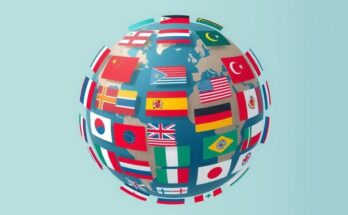Ethiopia’s Tigray region is facing ongoing political and humanitarian crises despite a peace agreement signed in 2022. The region’s leadership is divided, resulting in instability and public protests. The humanitarian situation is dire, with high rates of food insecurity and unemployment. The incomplete implementation of the Pretoria Agreement exacerbates the risks of renewed violence and economic hardship.
Ethiopia’s prolonged conflict significantly impacted the Tigray region, which continues to face substantial political and humanitarian challenges. The Ethiopian People’s Revolutionary Democratic Front governed the country for over two decades until the Prosperity Party took power in 2018, reducing the influence of the Tigray People’s Liberation Front (TPLF). On November 4, 2020, the federal government initiated a military operation against Tigray, igniting a two-year war that resulted in approximately 600,000 civilian deaths, marking it as a catastrophic conflict in recent history.
Despite the signing of the Pretoria Agreement on November 2, 2022, aimed at resolving the conflict, Tigray remains in disarray. The devastation from the war has left its residents struggling for resources such as food, water, and medical supplies, with no significant rehabilitation efforts undertaken. Additionally, the leadership within the TPLF is fracturing, giving rise to internal power struggles that further complicate the region’s recovery.
Key conflicts within the TPLF are notably between factions led by Debretsion Gebremichael and Getachew Reda. In early 2025, military leaders backed Debretsion’s call for new authority, conflicting with the interim administration’s stance, which resulted in accusations of a soft coup. This political instability has undermined the authority of the interim administration established by the Pretoria Agreement in March 2023, worsening the critical humanitarian situation and expanding security threats.
Economically, Tigray is grappling with a staggering youth unemployment rate of 81%, exacerbated by wartime asset looting and the absence of a stable government. The psychological and social toll on the population is considerable, reflecting a community struggling with the aftermath of conflict. The Pretoria Agreement, facilitated by the African Union, sought to end hostilities and restore order but its incomplete measures have heightened tensions and insecurity in the region.
Partial implementations of the Pretoria Agreement have shown some positive outcomes, such as the re-establishment of the interim government and limited resumption of public services. However, the continued presence of Eritrean soldiers and other militias poses significant security challenges, obstructing the return of internally displaced people and complicating disarmament efforts.
Failure to fully implement the Pretoria Agreement could intensify the ongoing humanitarian crisis as one million displaced individuals face dire food insecurity. Furthermore, the internal strife within the TPLF breeds ineffective governance and hampers civilian safety. With deepening socio-economic woes, the likelihood of renewed conflict looms, especially with potential interference from Eritrean forces, who could exploit the existing political rifts. Without decisive intervention from the African Union and the international community, Tigray faces a precarious future with prospects of further destabilization.
In conclusion, although the formal hostilities in Ethiopia may have ceased, the Tigray region continues to grapple with profound challenges stemming from internal divisions and humanitarian crises. The Pretoria Agreement, while establishing a framework for peace, has not fully taken effect, leaving the region vulnerable to economic hardship and potential further conflict. Without comprehensive implementation of the agreement and international support, the situation in Tigray remains precarious, highlighting the need for urgent intervention to prevent escalation.
Original Source: www.inkl.com




